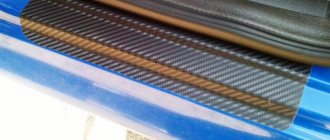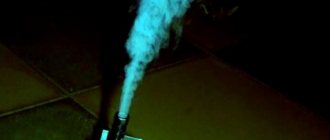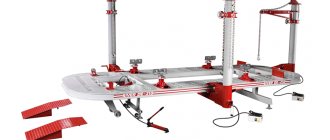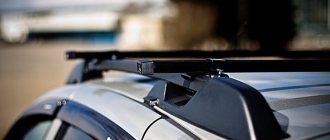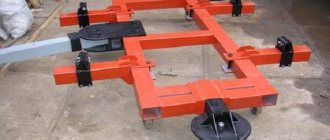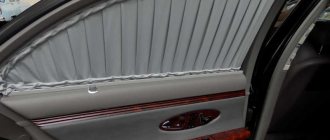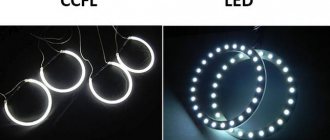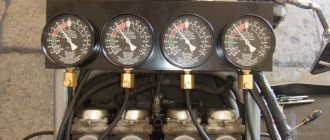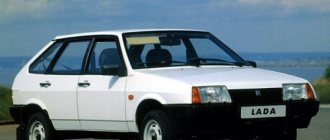Application of fiberglass and glue
For moderate damage, the method of sealing holes with fiberglass is often used. When this area has been processed and cleared of layers of paint and rust, it is necessary to cut several overlays from fiberglass, the size of the hole plus 2 centimeters. This area should be pre-primed and allowed to harden.
Auto repair kit
An overlay is applied to the dry surface and secured with a mixture (polyester or epoxy resin + glue). The next “part” is applied and also fixed. Thus, all the fiberglass parts are glued, placing them one on top of the other. To prevent them from sagging or deforming, you should put a lining. When the resin and glue have dried, you need to treat the work area and paint it.
Fiberglass
Method for filling holes using putty
How to make a spray gun for whitewashing with your own hands How to make a spray gun with your own hands Types of spray guns for paint
In the area of the hole in the bottom, you should remove the damaged coating, that is, the old layer of paint, and clean the metal, treat it with a special preparation - a rust converter. Then the working surface is degreased and primed. Next, prepare a putty solution of uniform consistency. For greater efficiency, fiberglass is added to it (most often with large elements). Then the composition is carefully applied to the damaged area. This is perhaps the most important part of the job. It is necessary to seal all the holes, cracks and microcracks that may arise around it. Application of the solution should occur in several stages, allowing each new layer to dry.
Sealing with putty
To achieve maximum fixation of the putty on the damaged area, a backing is applied to the reverse side. It does not allow the solution to spread, but acts in the area that needs to be repaired. If the hole in the bottom of the car is large enough, this repair method can also be used with auxiliary elements. Instead of a lining, a metal mesh is installed in the damaged area. Therefore, the putty is evenly distributed over it, filling the entire space. After the solution has completely dried, this area is treated with automotive paint putty. Then the damaged area is painted and a protective film is applied.
Putty for cars
Salt and reagents
The first and most common reason is the salt and reagents that are sprinkled on public roads to combat ice. It’s only a matter of time before visual traces of exposure to reagents appear on the thresholds of your car. To protect the car body from damage by reagents, it is necessary to carry out preventive maintenance on the body so that destructive substances do not come into contact with the metal. To do this, anti-corrosion treatment is carried out. The underbody of the car is covered with special protective materials. You can do this processing with your own hands. To do this, you will need a garage with a pit and the actual protective materials themselves. Personally, from my own experience, I use special rubber mastic and anti-gravel. Before starting work, the bottom must be washed and cleaned with a wire brush.
Leveling out dents on a removable threshold
How to make daytime running lights with your own hands
Repairing damage to a removable threshold is much easier. For this type of work you will need:
- a workbench or flat base plate on which straightening will be done;
- set of tools for straightening. It includes all kinds of hammers (soft and hard), planes and chisels for straightening;
- grinder and welding machine or pneumatic chisel.
To level out a dent on a car's removable threshold, proceed as follows:
- disconnect the damaged part of the car. To do this, you just need to screw in all the fastening bolts that held it in place and carefully pull out the part;
- install the damaged threshold on the workbench;
- using hammers and other tools for straightening metal products, carefully bend all the irregularities in the opposite direction;
- treat the entire threshold with a good anti-corrosion agent;
- put the car sill in place.
It’s worth remembering that this method of pulling out dents on a car’s removable threshold is not universal. It is relevant only in cases where the threshold is not too damaged and can be returned to its original state with hammer blows.
However, if the dent cannot be repaired, or if rust has already affected it, it is better to throw away such a part and put another one in its place. The advantage of this method of leveling dents is that there is no need to paint the damaged fragment - it will retain its original color.
How to stretch a threshold without welding
Repairing a threshold after a dent involves using a reverse hammer, a suction cup, or cutting the area of deformation for a non-removable element. The algorithm of action is as follows: it is necessary to drill holes with a diameter of 1-2 mm near the dent, insert special metal corner hooks of a reverse hammer into them. Then tapping on yourself straightens the area of deformation.
You can weld by spot welding, placing the end of a hammer on the dent, and drawing out the metal. In this case, you need to start from the corner of the dent, welding the end every 3-5 mm, while straightening the surface with a hammer.
The most reliable way to stretch the threshold without full welding is to use a spotter, rings, or stop. The method is often used at service stations, since many drivers do not have the necessary tools in the garage. You can make the device yourself from a used microwave oven. Drawing process step by step:
- The negative terminal from the battery is disconnected.
- Using a sanding machine, a layer of old paint is removed from the entire surface of the dent.
- Spot welding is used to install rings through which the puller bar is passed, and the metal is drawn out using a stop. The procedure is repeated until the surface becomes as smooth as possible.
- The metal is sanded with emery, treated with a degreaser, and primed.
- A thin layer of automotive putty is applied and treated with anticorrosive.
- After complete drying, it is painted with enamel.
Another way is to use a vacuum suction cup. This approach allows you to preserve the paintwork. The difficulty of using suction cups is due to the uneven edge of the dent; it is quite difficult to use a vacuum even if the dent has sharp edges and metal creases.
A frequent question about how to repair rotten sills on a car has only one answer: nothing. Rotten parts must be knocked out or cut out, the seal checked, and new metal welded. Cosmetic repairs are used only before urgently selling a car, but this is just one way of deceiving a gullible driver; it has nothing to do with a full restoration.
With minimal foci of primary corrosion, the elements are ground, treated with putty, and primed. To strengthen the structure, plastic or aluminum overlays are used.
Repair without welding, removable thresholds
How to make an aqua print on a car with your own hands
Repair of this type of thresholds is carried out without any particular difficulties for the driver. As we said above, the thresholds are attached using bolts or self-tapping screws. If damaged, you will need to unscrew the fasteners and remove the threshold, because this will make repairs easier. If the jack dented this element or the dent appeared in some other way, you can solve the problem using a workbench - an ordinary straightening tool will do the job. If the car threshold is badly damaged or completely covered with rust (almost rotted), then it is better to replace it. Be sure to treat the new threshold with anti-corrosion fluid before installing it. It is also recommended to buy a stainless steel threshold, but for such pleasure you will have to shell out a large sum.
Manufacturing process
1. There are a number of benefits that can be obtained from making your own. These include:
- saving money.
- possibility of individual design.
- reliable fastening.
- quality materials
2. The disadvantage of doing it yourself can be the large amount of time it takes, but the time spent will be fully compensated by the quality of the work.
3. First you need to select the material from which the thresholds will be made. The most common are:
- metal pipes of rectangular or round shape.
- Styrofoam.
4. The styrofoam threshold, however, will only serve as a decorative and protective element for the body. It will not bear a heavy load. If you plan to make it yourself, then you should remember this nuance.
5. The diameter of the pipe may vary, the best option would be a pipe of 5 cm.
6. In addition to the material for manufacturing, you will need to purchase additional parts such as:
- brackets.
- suspension
- washers.
- nuts
- corrugated iron (if you plan to cover the top of the footrest).
7. The threshold can be held on the body using fasteners on the bottom of the body. There are special holes for this.
8. The element itself can be made by welding pipes.
9. Since the shape of the pipe can be different, both types can be used to make posts from a square pipe onto which a round pipe is welded. The result is a very stylish element.
10. If you are wondering how to make a threshold in a car without welding, then you should choose a larger diameter pipe or use styrofoam. You can also bend a suitable sheet of metal. But both styrofoam and metal do not have sufficient strength to perform all the functions of the threshold.
11. During the manufacturing process, it is necessary to regularly try on the workpiece for the car in order to eliminate all defects and adjust it to the appropriate size.
12. The finished part must be cleaned, sanded and painted.
13. The paint must be of high quality, because it will have to withstand mechanical stress from flying gravel.
14. For reliability, you can make the edging with rubber and a layer of stainless metal.
15. If rust or any damage appears during operation, then instead of the task of how to make thresholds on a car yourself, the task will be how to repair them.
16. First you need to dismantle the old parts and clean the entire surface.
17. Once aligned, they are attached to the vehicle.
18. You can paint it after fixing it.
19. The surface can be protected from corrosion using special means. Anti-corrosion protection is not recommended to be done with polyurethane foam, since at home it is not possible to apply it efficiently.
Knowing whether it is possible to make a threshold for a car, each car owner can choose between working with his own hands and contacting a service center. Making any parts for a car yourself is often more pleasant for motorists than entrusting their vehicle to strangers.
Thresholds on a car are a very important element that is designed to make getting into the car more comfortable. In addition, the thresholds also have decorative functions - they can decorate any modern car. Of course, a lot depends on the correct manufacturing of the parts. If you carefully prepare and follow the algorithm, you can create stylish and reliable elements that will help improve the appearance and operation of the car.
Purpose and design of thresholds
Thresholds on a car play several roles at once:
- Protects cars from mechanical damage, scratches, deformations, etc.
- Assist passengers when exiting and entering the cabin.
- Protects body sills.
- They are a stylish addition to the car and make it visually more attractive.
Repair of thresholds on a car must be carried out in accordance with the design. It can be different: plastic, metal, chrome, with or without backlight. Thresholds may or may not be removable, which must also be taken into account during repair work.
What thresholds can be repaired without welding?
The easiest way to repair removable parts is that they are simply dismantled and replaced with new ones. These components are practical to use. Removing them is not difficult, and the whole process does not take much time - dismantling is carried out from the side or outside the spar.
After dismantling and restoration of removable thresholds, we carry out the following actions:
- unscrew the fasteners and dismantle;
- remove traces of rust using an emery cloth - to clean the corrosion we use a grinder with a special attachment;
- after removing rust, degrease the surface and apply putty;
- after the putty layer has dried, it is necessary to prime the surface, and after the primer has dried, begin painting;
- When the painted layer is completely dry, the part can be mounted to the bottom of the car.
Repair of thresholds on Passat B3
The amount of work with the thresholds on the Volkswagen Passat B 3 will depend on the extent of their damage: sometimes you have to resort to extreme measures and use a partial replacement of the part. Experts give the following recommendations:
- It is best not to skimp on repairs and, if necessary, replace old damaged parts with new ones.
- The highest quality repair result will be obtained only with the use of a welding machine.
- It is not recommended to use iron and zinc thresholds when replacing them: they are not very durable and require a lot of time to install.
There is a fairly large assortment of thresholds on the market for body repairs of the Passat B3. The best option is to choose durable thresholds that are close to the “original” thresholds; they will last longer and will be easy to install.
Types of connections when replacing a car threshold
Repair manuals usually mention two types of connections between the new threshold and the remains of the old one. These are lap joint and butt joint with insert. A simple butt connection can also be used. Let's look at the features of these connections and how they are made.
Butt connection with insert
The connection between the old and new parts of the thresholds is strengthened by inserts made from the remains of the same threshold. A butt joint with an insert allows you to achieve a smoother surface than an overlap, which does not require a lot of putty to level. The insert makes it easier to join the new threshold, reduces the likelihood of burning through during welding, and also reduces thermal deformation during welding by dissipating heat. The connection is more durable. Depending on the connection location, the insert may not always be used. This connection is usually used at the edges of the threshold. Where the sill joins the B-pillar, a lap or butt joint without an insert is usually used.
The size of the inserts can range from 5 to 10 cm. Depending on the configuration of the threshold, the insert is cut into 2–4 parts. The flanges are cut off, with the help of spot welding they hold the parts of the panels together. This way, the inserts will be able to fit inside the thresholds normally. They can be welded through drilled holes (8 mm) or temporarily screwed with self-tapping screws, the holes from which are then welded. The inserts must be treated with welding primer. When joining parts of the thresholds, it is necessary to provide a gap of sufficient size so that the molten metal during welding normally penetrates to the insert, and it is welded together with the two parts of the threshold. The width of the gap depends on the thickness of the metal and should be no less than 1.6 mm and no more than 3.2 mm.
Lap joint
When joining with an overlap, the old threshold must be marked and cut so that there is a margin of a few centimeters for the overlap. A new threshold is placed on top of the remains of the old threshold. Next, along the edges of the new threshold, a sealed seam is welded. The main advantage of this type of connection is the ease of joining the new threshold with the remains of the old one. There is no need to carefully adjust the edges. This is especially true when you have to join places that are complex in shape, for example, the connection to the middle pillar. When connecting with an overlap, there is less chance of burning through the metal. The disadvantage is the need to use more putty when leveling joints, as well as the predisposition to corrosion on the reverse side of the threshold, due to the complexity of anti-corrosion treatment of such a joint from the inside.
Butt connection
A butt joint requires careful matching of the new threshold with the remnants of the old one, as well as a certain skill in welding. The gap between the parts being welded should be approximately equal to the thickness of the metal being welded. A butt connection without an insert is less strong, but this is not critical, since the outer part of the threshold does not take the entire load. When implemented correctly, the joined area turns out smooth and requires a minimal amount of putty, and is also normally treated with an anti-corrosion compound on the back of the threshold by spraying special products.
Convenience of thresholds when boarding passengers.
In this case, some motorists who have a low-slung vehicle may doubt the need for thresholds, citing the fact that they can simply raise their legs higher and see where they need to be placed later. However, this opinion can only be held by men who have never had to wear high-heeled shoes, or who no longer remember what it was like to be a small child. If you are not an avid bachelor and care about a comfortable fit for your loved ones and loved ones, then you will not think for a minute about whether it is really necessary to install such thresholds in your car. This is simply an irreplaceable part for convenient and comfortable boarding of passengers!
How to cook thresholds on a car
To repair a fixed threshold, a trestle or inspection hole with dimensions sufficient for welding work is required. Areas affected by corrosion are cleaned down to metal using an abrasive tool or sanding paper. It is more convenient to weld car sills after removal. After determining the boundaries of the damaged area, it is cut out with a grinder.
The applied patch must be of the same material and equal in thickness. After welding, the seams are cleaned and polished. If the threshold is not painted after repair, the color of the patch must match the main one. In case of applying a coating, the surface is degreased, primed, treated with fine sandpaper and varnish is applied.
If your welding skills are high enough, the thresholds can be cut off and worked on on a workbench before repairs. This is convenient not only when applying a patch, but also when straightening dents. After finishing the work, the thresholds are welded to the body.
It is more convenient to weld car sills after removing
Threshold repair for Honda CR-V
When repairing the thresholds of this model, it is important to consider the following features:
- Rotten thresholds need to be replaced with new ones; trying to save on this will cost you more in the future.
- Upon completion of repair work, the use of an anti-corrosion compound is especially important.
- For this car model, it is better to choose plastic sills.
Body sills for Honda can be purchased both new and used. When choosing the latter, take into account their degree of wear and pay attention to the price. Don't skimp on repairing your car yourself: then it will last longer.
Work technology
The rivet connection method is the fastening of two or more metal sheets using cylindrical rods with heads at the ends. Holes are pre-drilled in the parts to be joined. A rivet, with one head made in advance, is inserted into the hole and the second head is formed. The heads of the rivets pull the sheets together and prevent them from being torn off. The rod of this fastener prevents the lateral mutual displacement of parts and is subject to shearing forces.
Rivet joints are used in body production:
- for securing sheets (of light alloys most often);
- for securing parts made of plastic materials;
- when assembling frames.
During repairs, this method is most often used to replace corroded body cladding when welding is unreliable. Riveted joints are especially common when repairing floors - the damaged area is replaced with a new panel. A properly executed rivet seam is as strong as a welded seam.
Equipment
So, having figured out which dents you can straighten without painting with your own hands, you can begin the process. Before you begin repairing dents without painting, you will need several tools to do this.
First and foremost on this list is a tool for removing dents without painting. This tool comes in three types. In fact, the principle of the first two is based on the same thing.
First type
So, the first type of equipment is needed to carry out paintless removal of dents from a car body; it is a special device with various attachments. The principle of operation is based on the fact that the nozzle is glued to the car body with glue and after the glue dries, a special device is used to pull out the dents.
Today, this method is most popular in inexpensive service stations. The fact is that such equipment for performing paintless dent removal is relatively cheap, and you can earn quite a lot with its help. Most often, the equipment pays for itself in no more than a month.
- In order to glue the nozzle to the car body, the kit includes a special gun that heats the glue.
- After gluing, you need to wait a certain amount of time for the glue to harden, and only then can you begin straightening the dents.
- After straightening the dents has been successful, you need to reheat the glue and remove it from the surface of the body.
Second option
The second device for leveling dents works on the same principle. Only instead of glue, the connecting element here is vacuum. In order to make minor dent repairs without painting using such a device, you just need to lean it against the car, press it tightly and pump out the air. After this, you need to start fixing the dents.
In fact, this method is better than the first in that there are no traces of repairs left on the body at all. Upon completion of removing dents from the car body, you just need to return the air back using a special valve. This device has one significant drawback; it is that this device is quite expensive compared to the device presented in the first version. The main advantage is that repairs can be done with your own hands at home.
Third type
The third technology, by which you can correct body irregularities covering doors, fenders and other elements, straighten them with your own hands, is based on the fact that dent repair is carried out from the inside of the door or other dented part. Such local dent repair is extremely rare due to its high cost and complexity of the process, which may not be possible the first time with your own hands. How to remove unevenness on a car using this method can be found on the Internet or in the instructions that come with the kit upon purchase.
Repair of fixed thresholds
If you compare welded components and their removable counterparts, it becomes clear that the former are more difficult to repair. But they have a serious advantage - a long service life.
The difficulty of working with welded thresholds is that there is a need to dismantle body parts. This is due to the fact that welding is used to secure the parts and it is difficult to remove them.
Important! Correcting non-removable thresholds requires the car enthusiast to know how to use welding.
In practice, body repair specialists advise replacing worn and rotten sills. Welding repair inserts does not always provide a positive result. The fact is that a zone of stress concentration is created near the weld. Corrosion processes actively take place in this place and after some time rusty spots appear.
The steps for replacing them are as follows:
- To replace a corroded threshold, using a lift, the car is raised to the maximum height above the floor level.
- The doors are removed, and seats and rugs are removed, that is, everything that could interfere with work.
- To dismantle this component of the body, you will need a sander or cutter.
- At the same time as the threshold, other worn elements that are unable to maintain the required body rigidity parameters are removed.
- After freeing up space to install the threshold. The new part needs to be adjusted.
- Once all the elements of the body structure are adjusted, you can begin welding all the seams.
- This will ensure that there is no distortion of the body geometry.
- When starting recovery, you need to understand that this operation is complex.
The advantages of non-removable parts include the fact that their restoration does not require their removal from their original place. The body has sufficient strength to be restored through the bottom. This will require an anvil and a hydraulic tool.
Some car owners use an impact-type tool. But you shouldn’t do this, as this can lead to unnecessary holes forming in the body.
Before replacing non-removable components, the car owner must clean off traces of rust on the body and treat them with protective compounds.
This treatment ensures the appearance of new rust spots and stops the development of existing ones.
To repair fixed thresholds there is no need for specific knowledge and skills. As already noted, a person must be able to handle welding and ordinary plumbing tools.
The car enthusiast is required to have a desire to restore the body of his car and get rid of rust for as long as possible.
The quality of operation depends on the quality of car care. That is, the car owner must periodically conduct an external inspection of them and remove any rust stains that have formed. Renew the protective coating and, of course, operate the car carefully - avoid jumping off curbs, etc.
In practice, the following protection measures are used:
- application of aerosol anti-gravel coating.
- installation of overlays, moldings.
- pasting with armored film.
- application of protective mastic or red lead.
Types of car thresholds
Before you begin repairing the threshold, you need to clearly understand what you are faced with and what leveling method you will need to use. This directly depends on the type of part installed on your car. All car thresholds can be divided into two main categories:
- Removable. Such a part can be easily removed at any time, because it is attached to the body and bottom using ordinary bolts.
- Cast. They are welded to the vehicle body at the factory and cannot be removed. Such a threshold can only be removed by cutting it out. So repairs are usually carried out without separating the part from the car.
What you need
Welded thresholds are tightly welded to the body and cannot be dismantled, so it is necessary to restore the damaged surface on the car body.
There are several restoration methods that use the following materials:
- epoxy adhesive;
- solvent;
- grinder or attachment for an angle grinder;
- powder based on aluminum shavings;
- putty and primer;
- fiberglass;
- dye;
- spatula and brushes.

